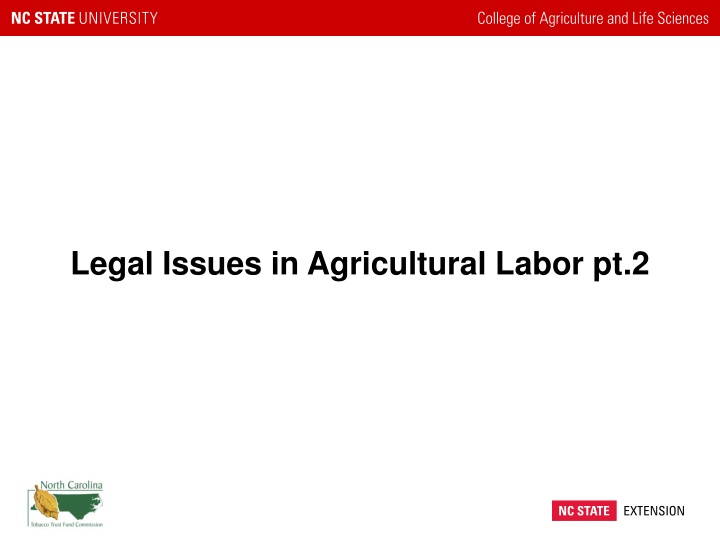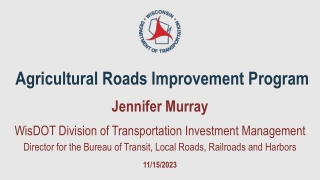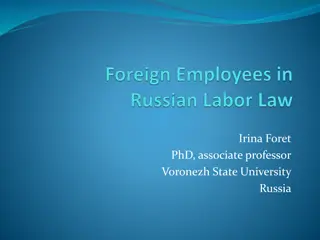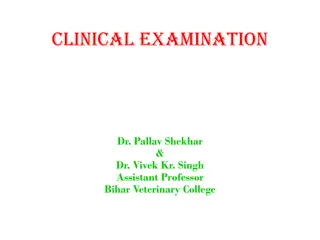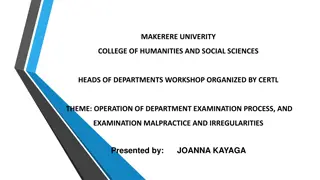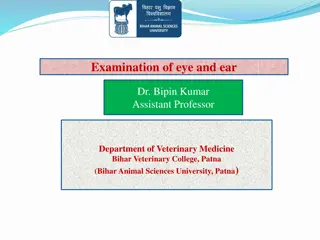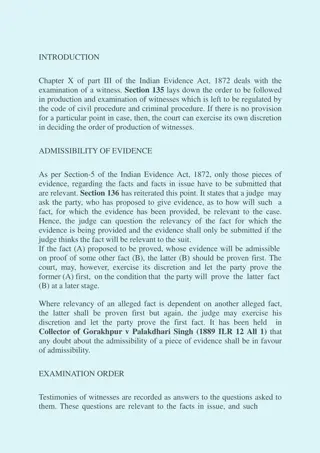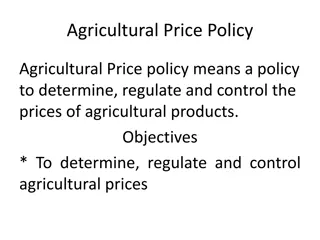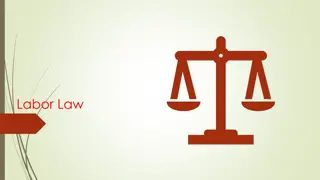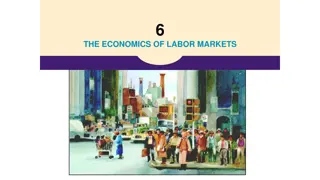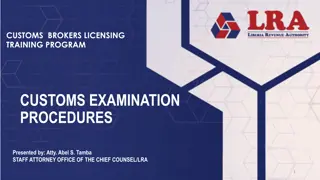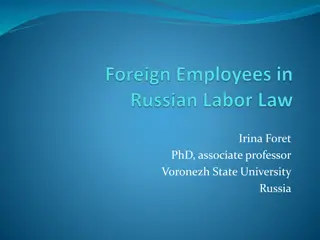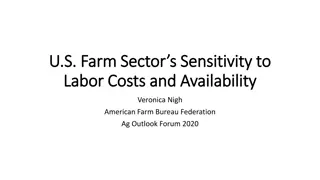Legal Issues in Agricultural Labor: A Comprehensive Examination
This article delves into the complexities of legal matters surrounding agricultural labor. It explores key issues such as employment standards, worker rights, and compliance regulations, providing valuable insights for both employers and employees in the agricultural sector.
Download Presentation

Please find below an Image/Link to download the presentation.
The content on the website is provided AS IS for your information and personal use only. It may not be sold, licensed, or shared on other websites without obtaining consent from the author.If you encounter any issues during the download, it is possible that the publisher has removed the file from their server.
You are allowed to download the files provided on this website for personal or commercial use, subject to the condition that they are used lawfully. All files are the property of their respective owners.
The content on the website is provided AS IS for your information and personal use only. It may not be sold, licensed, or shared on other websites without obtaining consent from the author.
E N D
Presentation Transcript
H-2A Program Authorizes temporary entry to US for agricultural work Employer must initially attempt to recruit citizen labor Ads run in local newspaper Jobs hard to fill locally Employer must provide housing to specification 3 meals a day or adequate cooking facilities Employer must provide transportation All costs/fees associated with the H-2A process must be paid by the employer, including visa costs. Inbound and outbound transportation
H-2A Application Process Employer must certify: 1. There are not sufficient workers who are able, willing, and qualified, and who will be available at the time and at place needed, to perform the labor or services involved in the petition and 2. The employment of the alien in such labor or services will not adversely affect the wages and working conditions of workers in the United States similarly employed.
Recruitment Requirements To meet certification requirements, employer (farm) must advertise available employment for coming season (contract period) Advertised in interstate employment system Local advertising 50% rule: employer required to hire qualified domestic worker who answers recruitment up through first half of advertised contract period US DOL must issue certification no later than 30 days past employer farm s certified date of need Employer pays for transportation to and from Mexico with per diems Employer must provide housing per regulation Petitions are generally filed by agricultural associations In NC, the NC Growers Association is primary petitioner on behalf of members Some individual farms petition (attorney practice)
H2A Compensation Adverse Effect Wage Rate (AEWR) Pay rate 3 state average of all agriculture wages survey by USDA-NASS 2020 AEWR on Jan 2, 2020. North Carolina .......................... $12.67 Virginia ...................................... $12.67 South Carolina . $11.71 employers must pay their H 2A workers and workers in corresponding employment at least the highest of: (i)The AEWR; (ii) the prevailing hourly wage rate; (iii) the prevailing piece rate; (iv) the agreed-upon collective bargaining wage rate, if applicable; or (v) the Federal or State minimum wage rate, in effect at the time the work is performed. -> 20 CFR 655.200 655.235
Past H-2A Abuses Remedied No charging recruitment fee to workers Retaliation prohibited: a person may not intimidate, threaten, restrain, coerce, blacklist, discharge, or in any manner discriminate against any person who has engaged in actions in relation to protections under the H- 2A program (29 CFR 501.4) Holding of worker passports prohibited
Employee Classifications Issue: obligation to pay employment taxes Employee vs. Contractor Employee (required to pay ESC, FUTA, SUTA, etc.) Generally, if you provide direction, tools, time parameters, etc., classify as employee (I-9, etc.) (W-2) Contractor (contract rate only) Generally, contractor provides own tools, schedule, etc. (1099) Unpaid Intern vs. Employee Unpaid Intern: must have association with education structure, generally non-profit Employee: business gets economic benefit Cannot volunteer for a for-profit business critical function
Worker Classification (payment of taxes, etc.) 1099 vs. W-2 Law presumes that a worker is an employee Burden is on the employer to prove otherwise Back taxes, interest, and penalties can result from misclassification of workers Contract labor usually means temporary staff obtained from a temporary staffing firm, or workers supplied by a labor agent Reality: Independent contractors exist, but all the legal presumptions are against employers who want to classify workers as such
Employee Classification Factors subject to the will and control of the employer not only as to what will be done but how it will be done The right to do so Employer supplies tools = employee Employer supplies place to work = employee Lack of written contract http://www.ncosc.net
